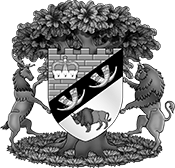Hydrology
The territory of the national park is drained by the watersheds of Narev and Lesnaya (Levaya and Pravaya), which belong to the Visla basin.
Narev, which originates in the swamps of the Dykoe plot of land, plays an exceptionally important part in regulating the hydrological regime in the northern part of the national park. Its main tributary is the river Narevka. The main waterways in the southern part of the park are the rivers Pravaya Lesnaya and Levaya Lesnaya.
The chart shows the hydrographic network of the territory of the national park, and the table shows the characteristics of its main rivers and reservoirs.
|
Name |
Length/area (km/ha) |
Altitude of source above sea level |
Average slope of the riverbed |
Current speed (m/s) |
Watershed (sq.km) |
|---|---|---|---|---|---|
|
the river Belaya |
13 |
157 |
o,6 |
0,2 |
366 |
|
the river Vishnya |
17 |
158 |
0,8 |
0,1-0,2 |
121 |
|
the river Gvozna |
9 |
159 |
0,6 |
0,1 |
- |
|
the river Gorbach |
9 |
167 |
1,1 |
0,3 |
- |
|
the river Dryunovka |
13 |
169 |
0,9 |
0,1-0,2 |
- |
|
the river Kolonna |
14 |
179 |
1,0 |
0,2-0,3 |
278 |
|
the river Lesnaya Levaya |
38 |
162 |
0,4 |
0,2 |
- |
|
the river Lesnaya Pravaya |
29 |
- |
0,5 |
0,3 |
- |
|
the river Lomovka |
10 |
186 |
2,6 |
0,1-0,2 |
- |
|
the river Medyanka |
17 |
189 |
1,2 |
0,1 |
91 |
|
the river Narev |
33 |
159 |
0,6 |
0,2-0,3 |
|
|
the river Narevka |
8 |
155 |
0,4 |
0,2-0,3 |
253 |
|
the river Nemerzhanka |
9 |
160 |
0,9 |
0,3-0,4 |
32 |
|
the river Perevoloka |
13 |
155 |
0,5 |
0,2-0,3 |
127 |
|
the river Plyuskovka |
6 |
162 |
1,0 |
0,1 |
- |
|
the river Polichna |
8 |
159 |
1,1 |
0,2 |
- |
|
the river Pchelka |
13 |
169 |
1,4 |
0,1-0,2 |
55 |
|
the river Ross |
4 |
174 |
1,4 |
0,1-0,2 |
|
|
the river Rudavka |
14 |
156 |
0,8 |
0,2-0,3 |
173 |
|
the river Sipurka |
11 |
170 |
1,5 |
0,3 |
- |
|
the river Tochnitsa |
6 |
158 |
0,4 |
0,1 |
- |
|
the river Tushemlyanka |
12 |
162 |
1,0 |
0,1 |
40 |
|
the river Horovka |
6 |
176 |
2,2 |
0,2-0,3 |
|
|
Lyatskoe reservoir |
260,4 |
- |
- |
- |
- |
|
Hmelevskoe reservoir |
81,4 |
- |
- |
- |
- |
|
Sipurka reservoir |
26,6 |
- |
- |
- |
- |
|
Pererovnitsa reservoir |
20,1 |
- |
- |
- |
- |
|
Kolonna reservoir |
16,9 |
- |
- |
- |
- |
In addition to those listed in the table, on the territory of the national park there are smaller streams and rivers, with a length of 5 km (Olkhovka, Vjunovka, Kulevka, Pererovnitsa, Kalinovets, Muravka, Tisovka, Pobojka, Pesyat, etc.).
There are no natural lakes there. But as a result of drainage and irrigation works several large artificial reservoirs (Lyadsky, Hmelevskoe, Sipurka, Pererovnitsa, Kolonna) and a number of smaller ones (12 with an area of 1 to 10 ha and 49 with an area of up to 1 ha) were created.
The network of reclamation canals is quite extensive. This is especially true in regard to the land transferred to the national park in the last decade, where in the 50-60s of the last century drainage works were carried out on the lands of collective farms bordering with the Belovezhskaya Pushcha. The riverbeds of some rivers (Narevka, Belaya) were straightened and deepened, which caused a retrogression of their level; new artificial waterways were created; Dokudovo (130 ha), Zubritsa (160 ha), Galevo Boloto (300 ha), Teplukhi (300 ha), Nikor (1450 hectares) plots of land were drained. The total area of drained land in the Pushcha is 2340 hectares, and the total length of the irrigation and drainage network is 592 km according to the 2006 forest inventory.
The regime of the national park reservoirs is characterized by intensive spring floods and a stable summer-autumn and winter low water level. The rising of the water level during the spring flood usually begins in the middle of March (in early springs - in the second half of February, in late springs - in the first decade of April) and lasts 7-15 days. The maximum spring rise of water is about 2.0-2.5 m (in some years 3.0 m). The average duration of flooding is about 60-70 days.
Summer low-water season occurs in the first half of May. Almost every year (1-2 times per season) it is interrupted by rainfall floods. The long-term amplitude of winter low-water levels is 20-40 cm.
A stable ice cover is formed in the third decade of December (the deviations from this period are possible: from the first of December to the third decade of January). The usual thickness of ice is 35-45 cm. The reservoirs become open in the middle of March - the first decade of April. Rainfall floods are observed annually, in rainy years up to 3-4 times.
Stream runoff depends mainly on the amount of precipitation and evaporation. Most of it falls on the spring period.
